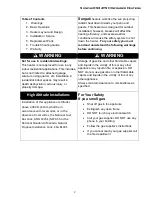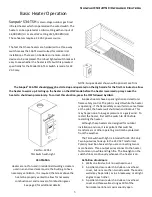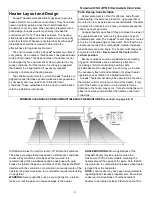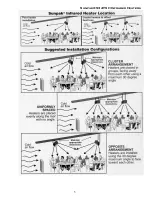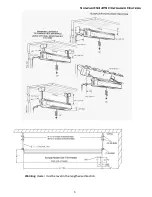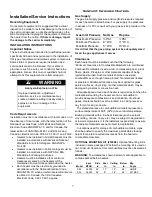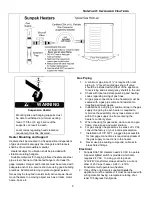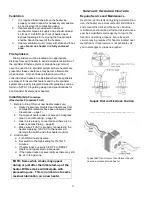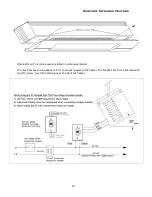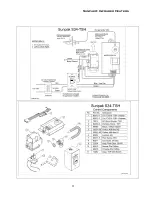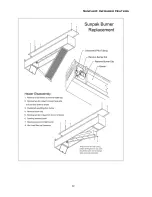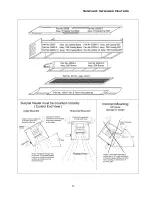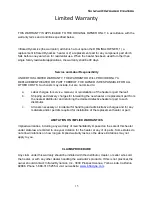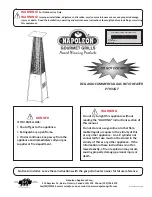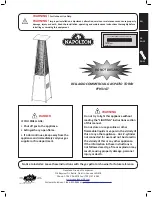
Sunpak® S34-TSH Infrared Heaters
4
Heater Layout and Design
Sunpak
®
heaters were specifically designed to provide
heated comfort in an outdoor environment. They have been
used on outdoor patios across the United States and
Canada for over 40 years. When properly integrated into a
patio design, Sunpak
®
heaters generally increase the
comfort level 5º to 10º Fahrenheit outdoors. The heating
effectiveness will depend on air temperature, wind velocity
and other factors. Whenever possible other local Sunpak
®
installations should be reviewed to determine the
effectiveness for regional environment.
The environments in which Sunpak
®
heaters are utilized
vary greatly. As an outdoor rated heater it has passed basic
wind and rain tests. This does not mean the heater cannot
be damaged by the environment or when operated in very
windy conditions. For this reason it is strongly suggested
that heaters be inspected and if necessary repaired
annually or before each heating season.
The variable environments in which Sunpak
®
heaters are
applied means that these general guidelines are generated
by necessity and may need to be refined for local
conditions. These guidelines are to be used in combination
with the installation instructions.
Patio Design Consideration
Heater placement is critical for effective and efficient
patio heating. If heaters are placed too close together or
mounted too low, people become uncomfortable. If heaters
are placed too far apart on a breezy, wind-swept patio the
patio may never get warm.
Sunpak
®
heaters work best if they are placed in areas of
the greatest heat loss, such as the open side of a semi-
protected patio area. The Sunpak
®
heater may be mounted
at up to a 30 degree angle or face down. Note that the top
clearances required from combustible material increases
when heaters are at an angle. The heater must always be
horizontal to the floor.
Never mount the heater in the
vertical position.
Breezy conditions must be considered when heating
any patio. Windbreaks can be extremely effective in
increasing comfort and reducing heating costs.
Windbreaks must be designed in such a way as to allow
the necessary fresh air and ventilation for proper heater
operation (see ventilation of installation section).
Sunpak
®
heaters must always be operated in a location
that allows uniform air pressure around the heater. If only
part of the heater is located in a wind protected zone
damage to the heater may occur. Time should be taken to
observe how the wind will affect the heaters under local
conditions.
MINIMUM CLEARANCE FROM COMBUSTIBLE MUST BE MAINTAINED (see chart on page 6 & 7
)
SUNPAK will raise the comfort level 5-10º Fahrenheit outdoors.
The above coverage table was based on still breeze conditions.
Under windy conditions more heat will be required. It is
recommended that a windswept patio be designed with wind
breaks to stabilize the patio environment. Wind breaks shall NOT
interfere with the ventilation or combustion air requirements of the
heater(s) and meet clearance for combustible requirements listing
on page 6 & 7.
WARNING:
Severe updrafts such as you might get on a raised
terrace or roof top patio can cause damage to the heater.
ANGLE MOUNTING:
Most applications of the
Sunpak® heater may be angle-mounted to a
maximum of 30º to accommodate mounting the
heaters around the edges of the patio. Note that the
top clearance to combustibles increases when heater
is tipped from the horizontal.
NOTE:
Local codes may have special requirements
regarding head clearance requirements. Some local
codes require all portions of overhead radiant
heaters to be located at least 8 feet above the floor.


